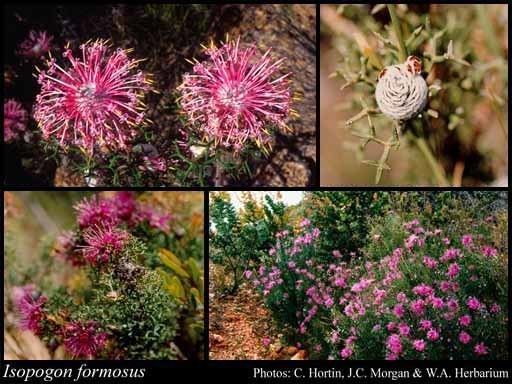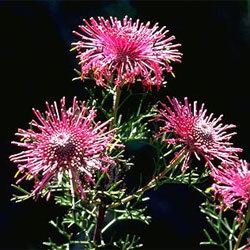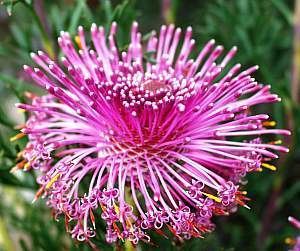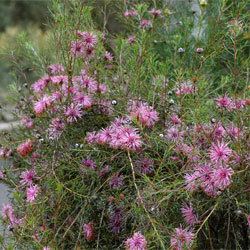Genus Isopogon Rank Species | ||
 | ||
Similar Isopogon, Isopogon anemonifolius, Isopogon cuneatus, Isopogon dubius, Isopogon latifolius | ||
Isopogon formosus or Rose Cone Flower is a shrub that is endemic to areas near Albany and Esperance in Western Australia. It occurs naturally in heathland and woodland areas.
Contents

Description

It has an erect or bushy form and is usually between 1.5 and 2 metres high. The pink flowers appear from mid winter to early summer. Rounded "drumsticks" containing the seeds appear later, formed from the old flower parts.The plants leaves are divided, narrow, terete and about 5 cm long.
Taxonomy

It was first described by Robert Brown in 1810. In 1891, German botanist Otto Kuntze published Revisio generum plantarum, his response to what he perceived as a lack of method in existing nomenclatural practice. Because Isopogon was based on Isopogon anemonifolius, and that species had already been placed by Richard Salisbury in the segregate genus Atylus in 1807, Kuntze revived the latter genus on the grounds of priority, and made the new combination Atylus formosus for this species. However, Kuntze's revisionary program was not accepted by the majority of botanists. Ultimately, the genus Isopogon was nomenclaturally conserved over Atylus by the International Botanical Congress of 1905.
Cultivation

Isopogon formosus requires excellent drainage and full sun. It will not tolerate long periods of dryness or heavy frost.
